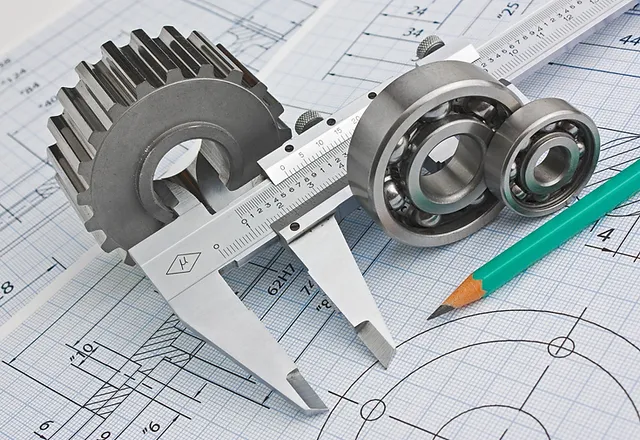From Idea to Market: A Complete Guide to Product Design and Development
Turning an idea into a market-ready product is a journey filled with creativity, strategy, and precise execution. Product design and development is not just about aesthetics—it’s a process of identifying user needs, engineering functional solutions, and ensuring market viability. Whether you're a startup founder or part of an innovation team in a large enterprise, understanding this journey is crucial.
1. Ideation: Identifying a Problem Worth Solving
The product journey begins with identifying a real need. This phase involves market research, user interviews, competitor analysis, and trend forecasting. The goal is to pinpoint a problem or gap in the market and brainstorm potential solutions. At this stage, quantity of ideas is encouraged—quality will be refined later.
2. Concept Development: From Ideas to Concepts
Once a promising idea emerges, it’s time to refine it into viable concepts. Storyboarding, sketching, and prototyping come into play here. Teams often develop several variations of a product idea to evaluate which design best meets user expectations and technical feasibility.
3. Design: Form Meets Function
Product design is where functionality and user experience converge. This phase includes:
Industrial Design: Physical look, feel, and ergonomics
User Interface (UI)/User Experience (UX): Digital interfaces and user flows
Technical Feasibility: Ensuring the design can actually be manufactured or coded
Tools like CAD software, wireframing tools, and 3D modeling help bring the vision to life.
4. Prototyping: Testing the Waters
Prototypes are essential for testing form, function, and usability. Whether it's a 3D-printed model or a digital beta, prototypes allow teams to gather user feedback and make iterative improvements before mass production or launch.
5. Development: Turning Designs into Reality
During development, engineers and developers work closely with designers to build the final product. For physical products, this may include sourcing materials, tooling, and manufacturing trials. For digital products, it involves coding, system integration, and rigorous QA testing.
6. Launch Preparation: Planning for Success
Before going to market, companies must consider:
Marketing strategy and positioning
Pricing and packaging
Distribution channels
Customer support setup
Legal protections like patents or trademarks
A successful launch relies on clear alignment across departments and a deep understanding of the target audience.
The Clix Route Approach to Product Design and Development
Clix Route has emerged as a trusted partner in guiding companies through the entire product design and development lifecycle. Their approach blends user-centric design with agile development, ensuring rapid progress without compromising quality.
Key elements of Clix Route’s methodology include:
Deep discovery sessions to understand business goals and user needs
Iterative prototyping and testing to refine solutions early
Cross-functional collaboration between designers, engineers, and strategists
Scalable product strategies that align with long-term growth goals
Whether you're building a new digital platform or a physical product, Clix Route’s expertise ensures your idea doesn’t just get built—it gets built right.
Conclusion
Creating a successful product is more than a linear process—it’s a strategic evolution from insight to innovation. With the right blend of creativity, user feedback, technical precision, and agile execution, your idea can transform into a product that resonates in the market. Partnering with experienced teams like Clix Route ensures each stage is handled with expertise, giving your vision the best chance to succeed.
https://www.clixroute.com/services/design-engineering/
From Idea to Market: A Complete Guide to Product Design and Development
Turning an idea into a market-ready product is a journey filled with creativity, strategy, and precise execution. Product design and development is not just about aesthetics—it’s a process of identifying user needs, engineering functional solutions, and ensuring market viability. Whether you're a startup founder or part of an innovation team in a large enterprise, understanding this journey is crucial.
1. Ideation: Identifying a Problem Worth Solving
The product journey begins with identifying a real need. This phase involves market research, user interviews, competitor analysis, and trend forecasting. The goal is to pinpoint a problem or gap in the market and brainstorm potential solutions. At this stage, quantity of ideas is encouraged—quality will be refined later.
2. Concept Development: From Ideas to Concepts
Once a promising idea emerges, it’s time to refine it into viable concepts. Storyboarding, sketching, and prototyping come into play here. Teams often develop several variations of a product idea to evaluate which design best meets user expectations and technical feasibility.
3. Design: Form Meets Function
Product design is where functionality and user experience converge. This phase includes:
Industrial Design: Physical look, feel, and ergonomics
User Interface (UI)/User Experience (UX): Digital interfaces and user flows
Technical Feasibility: Ensuring the design can actually be manufactured or coded
Tools like CAD software, wireframing tools, and 3D modeling help bring the vision to life.
4. Prototyping: Testing the Waters
Prototypes are essential for testing form, function, and usability. Whether it's a 3D-printed model or a digital beta, prototypes allow teams to gather user feedback and make iterative improvements before mass production or launch.
5. Development: Turning Designs into Reality
During development, engineers and developers work closely with designers to build the final product. For physical products, this may include sourcing materials, tooling, and manufacturing trials. For digital products, it involves coding, system integration, and rigorous QA testing.
6. Launch Preparation: Planning for Success
Before going to market, companies must consider:
Marketing strategy and positioning
Pricing and packaging
Distribution channels
Customer support setup
Legal protections like patents or trademarks
A successful launch relies on clear alignment across departments and a deep understanding of the target audience.
The Clix Route Approach to Product Design and Development
Clix Route has emerged as a trusted partner in guiding companies through the entire product design and development lifecycle. Their approach blends user-centric design with agile development, ensuring rapid progress without compromising quality.
Key elements of Clix Route’s methodology include:
Deep discovery sessions to understand business goals and user needs
Iterative prototyping and testing to refine solutions early
Cross-functional collaboration between designers, engineers, and strategists
Scalable product strategies that align with long-term growth goals
Whether you're building a new digital platform or a physical product, Clix Route’s expertise ensures your idea doesn’t just get built—it gets built right.
Conclusion
Creating a successful product is more than a linear process—it’s a strategic evolution from insight to innovation. With the right blend of creativity, user feedback, technical precision, and agile execution, your idea can transform into a product that resonates in the market. Partnering with experienced teams like Clix Route ensures each stage is handled with expertise, giving your vision the best chance to succeed.
https://www.clixroute.com/services/design-engineering/







